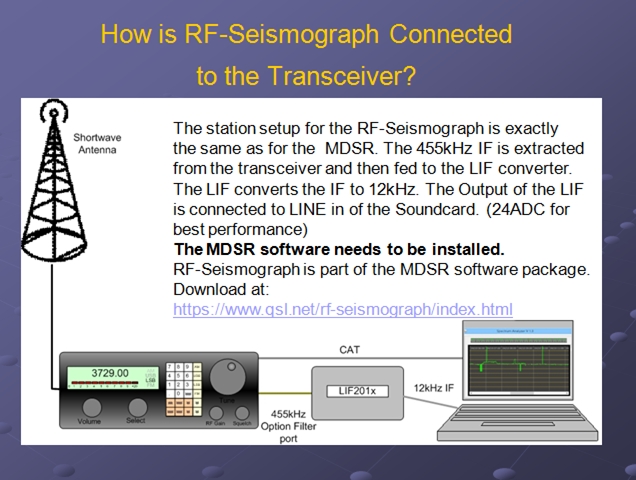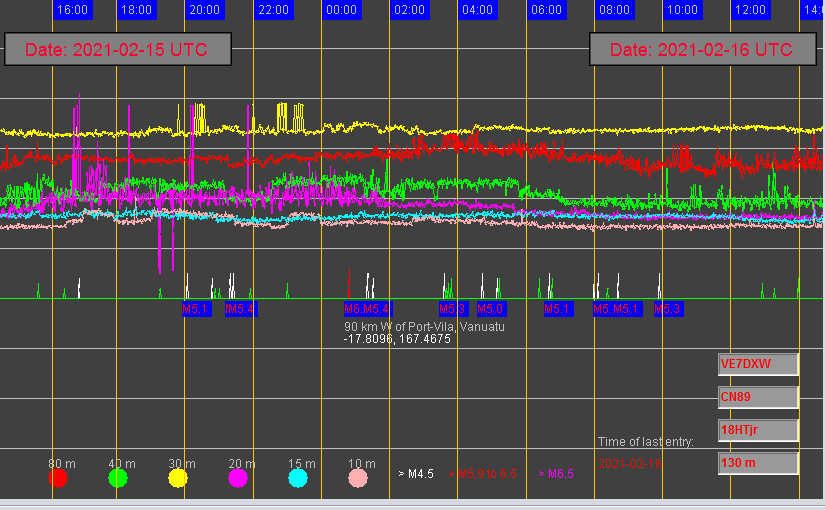Methods
Summary
Omni-directional antenna used by the RF-Seismograph test station
When monitoring background noise, it is imperative to use a big, preferably omni-directional antenna like the 18HTjr from Hy-Gain. This antenna is capable of covering all the major amateur bands including 80m. Each band that we record must have a defined resonant element on this antenna.
Big antennas are not only more efficient they are also a lot less interference-prone due to local near field changes. This means that some maintenance can be done without having to turn off the RF-Seismograph. Especially when the monitoring is over long periods of time, maintaining the antenna while it is recording with a minimum of interference is a big plus.
Antenna Balun and Lightning protection
Raspberry Pi Schematics including sound card
Use this Wiki to set up the software:
setting up RF-Seismograph on Pi
LIF2016 converter in shielded di-cast box
Link to website and for ordering the LIF2016 (without shield PCB only)
Challenges
Through the development of the MDSR project we have developed the expertise to make the IF interface between the LIF and the transceiver easy and simple for most transceivers. With easy to follow instructions for the most common analog transceivers available. In certain models the LIF-2016 fits directly into the filter port and all that is required is a +12V wire to power the LIF. For radios that not provide this filter port the LIF can be mounted inside with a connection to the PI-Sound card or outside as shown above.
In order to control the transceiver at CAT control cable is employed between the radio and the PI. Fl-rig can be configured to be adaptable to all available transceivers.

Help is always available via:
alexschwarz@telus.net or our user group at https://groups.io/g/MDSRadio
Pre Analysis Plan
The RF-Viewer software
All the collected data will be stored on the same ftp-site (currently: ftp.qsl.net/rf-seismogarph).
The RF-Viewer software is written in Java Net-Beans and will run on Linux, Pi, Mac and Windows with appropriate java framework installed on computer.
It is still developed to meet the needs to do multiple sites data analysis, but works to do the single site analysis and to create the daily report that we are currently generating.

To test out the RF-Viewer for Windows only for now, install Java, run this self extracting RF-Viewer. After the files are extracted click on "RF-Viewer.jar". Once the software is running press the "GetRemote Data" button and if you are connected to the internet the real time Lynn Valley graph will appear. Load the USGS data and then press compare, which can take a while.
If you have any question please e-mail us at:
Protocols
This project has not yet shared any protocols.



